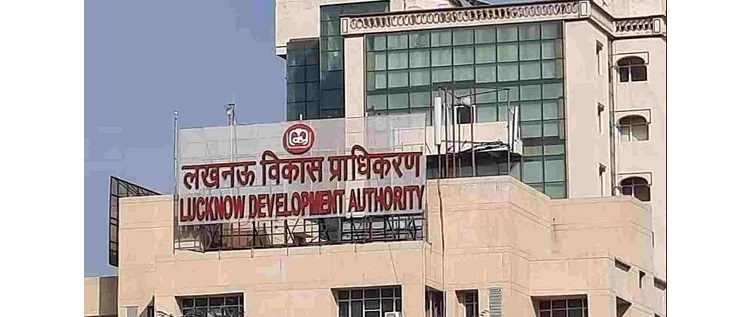E - PAPER
Homebuyers should still avoid buying incomplete properties
The worse is not yet over for real estate developers (especially in the residential segment) who have been facing a slowdown since about five years now. After continuous slump in demand, regulatory changes, court cases and insolvency proceedings, the non-banking financial company (NBFC) crisis has n
 BY
admin
BY
admin
Published - Wednesday, 28 Nov, 2018

The worse is not yet over for real estate developers (especially in the residential segment) who have been facing a slowdown since about five years now. After continuous slump in demand, regulatory changes, court cases and insolvency proceedings, the non-banking financial company (NBFC) crisis has now come to hound the realty sector. The crisis is all about asset-liability management mismatch; many NBFCs are facing liquidity issues and are unable to pay off lenders as they gave loans to borrowers for a longer period than the period for which they themselves borrowed money.
The current crisis will certainly impact under-construction and upcoming projects adversely and property prices may take a further hit. Those who are planning to buy a house in the near future need to be more cautious while making a decision.
Typically, developers raise funds for a realty project through investors, private equity (PE) funds and banks, but in the last few years these investment sources have dried up and even banks are cautious in lending to realty firms owing to several cases of delay and default in repayment of loans. “Already, lack of funding in the form of bank lending, PE investments and low sales have caused massive cash flow gap and financial crisis in the real estate sector,” said Harinder Singh, chairman, Realistic Realtors, a real estate consultancy and advisory firm.
In recent times, NBFCs were probably the only ones still lending to the residential sector. With NBFCs in trouble, it will be difficult for developers to meet their delivery commitments. In the absence of liquidity, either construction will stop completely or delivery dates will be pushed by over a year or even more in some cases, added Singh.
In other words, this will impact the timely execution of projects. “NBFC crisis could lead to substantial slowdown of fund inflow for the developers for at least next two to three quarters as NBFCs have now become cautious in lending. This may cause delay in completion of under-construction projects and we might witness further consolidation in the realty market,” said Samir Jasuja, founder and managing director, PropEquity, a Gurgaon-based real estate, research and analytics firm.
With low sales volume, developers will face severe cash crunch to fund the projects and other commitments. “The financial crunch that the NBFCs are facing today will make it difficult for developers to keep funding themselves in absence of higher sales numbers,” said Ashish Mahajan, co-founder, PropStory, a Gurgaon-based real estate information portal.
For many developers, the only way to tide over the current crisis would be to somehow enhance the sales book and generate cash flow. Reducing property prices can be an option and experts believe that some developers may go for it. “On a case-to-case basis, there are likely to be cases where developers offer lower prices to attract consumers and manage liquidity position,” said Arvind Nandan, executive director-research, Knight Frank India.
Even if developers do not reduce prices, there is certainly no scope for price appreciation. “The supply as well as the prices have been under pressure for some years now. The current financial crunch will create further stress on the sector, especially for developers relying on debt financing. We believe the price growth will not happen for the coming 12-18 months,” said Mahajan.
However, some experts believe that the current crisis will escalate the cost of construction and developers may try to pass it on to the homebuyers. “Such delays will further increase the development cost for builders as escalation of cost will trigger in,” said Singh.
Project delay can create a lot of financial trouble for end users as a lot of such homebuyers end up paying both the rent and equated monthly instalments (EMIs) until they get possession of their own house. “We would recommend buyers to look for either ready-to-move-in properties or projects nearing completion from reputed developers only,” said Jasuja.
There is a huge inventory lying unsold in each city, especially in National Capital Region and Mumbai Metropolitan Region. According to a report by LiasesForas, a Mumbai-based real estate rating and research firm, “Inventory in tier-I cities stands at 40 months as of Q2 18-19.” That means it will take 40 months to clear the unsold stock at the current sales volume. The report further states that an efficient market maintains 8-12 months of inventory. An inventory overhang of 40 months indicates a pressure on prices across all major cities in India.
“In the current scenario, there are plenty of options in the ready-to-move-in segment of housing to choose from. To top it up, these also come with easy financing schemes and freebies. Hence, an end user would be best positioned to buy into such a proposition,” said Nandan.
Apart from eliminating the risk of project delay, there are various other benefits of buying a ready-to-move-in property. Buying a house is often the biggest financial decision, make it worthwhile.
RELATED STORY VIEW MORE
TOP STORY VIEW MORE

Mixed Outlook for Australia's Housing Sector In 2024
Mixed Outlook for Australia's Housing Sector In 2024
05 December, 2024NEWS LETTER
Subscribe for our news letter
E - PAPER
-

CURRENT MONTH 
LAST MONTH














